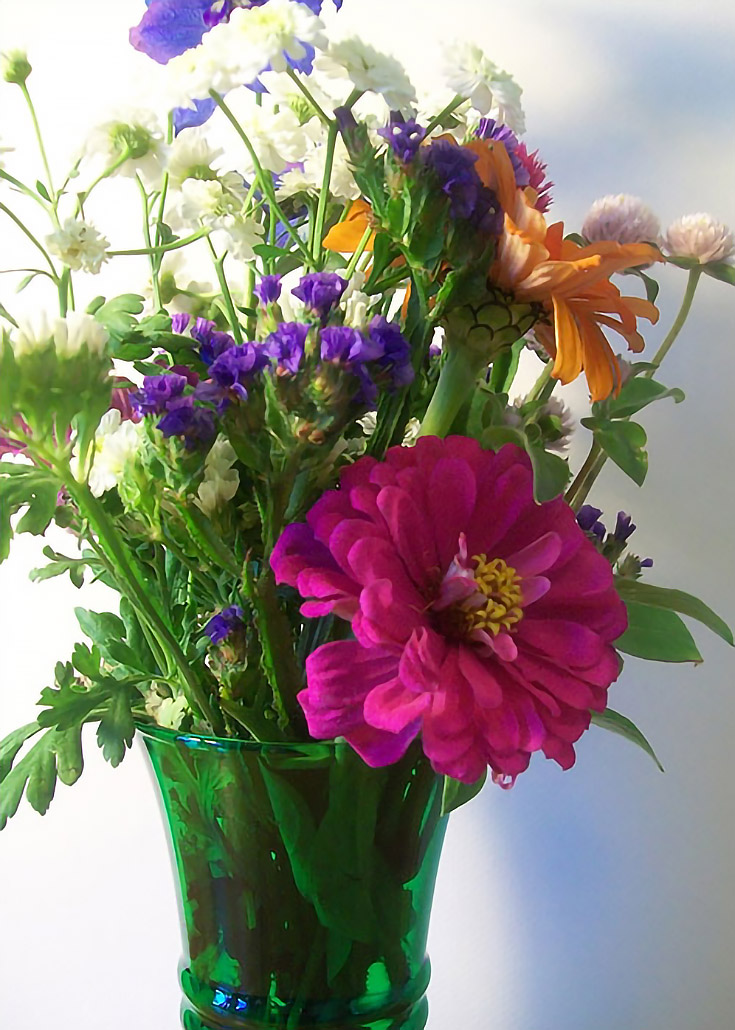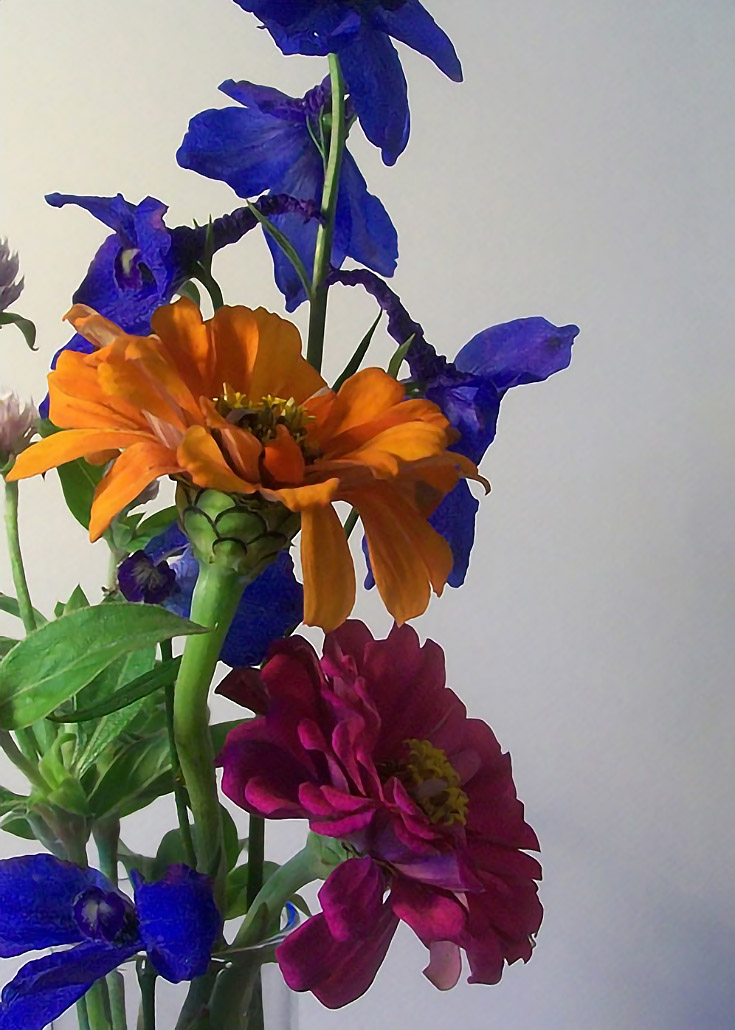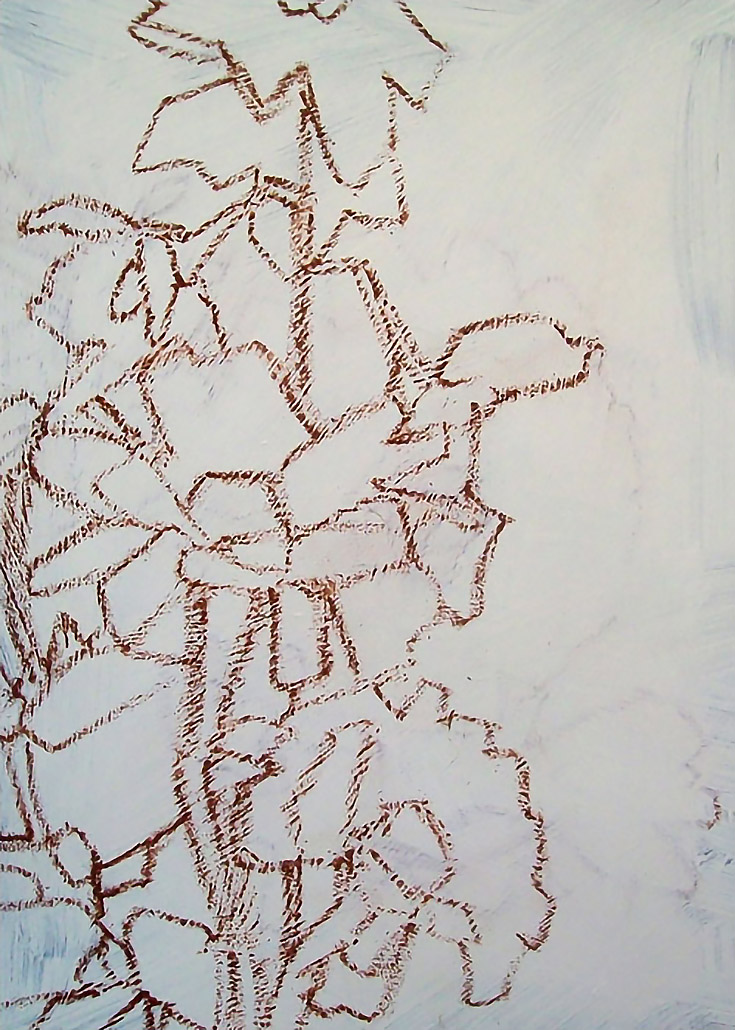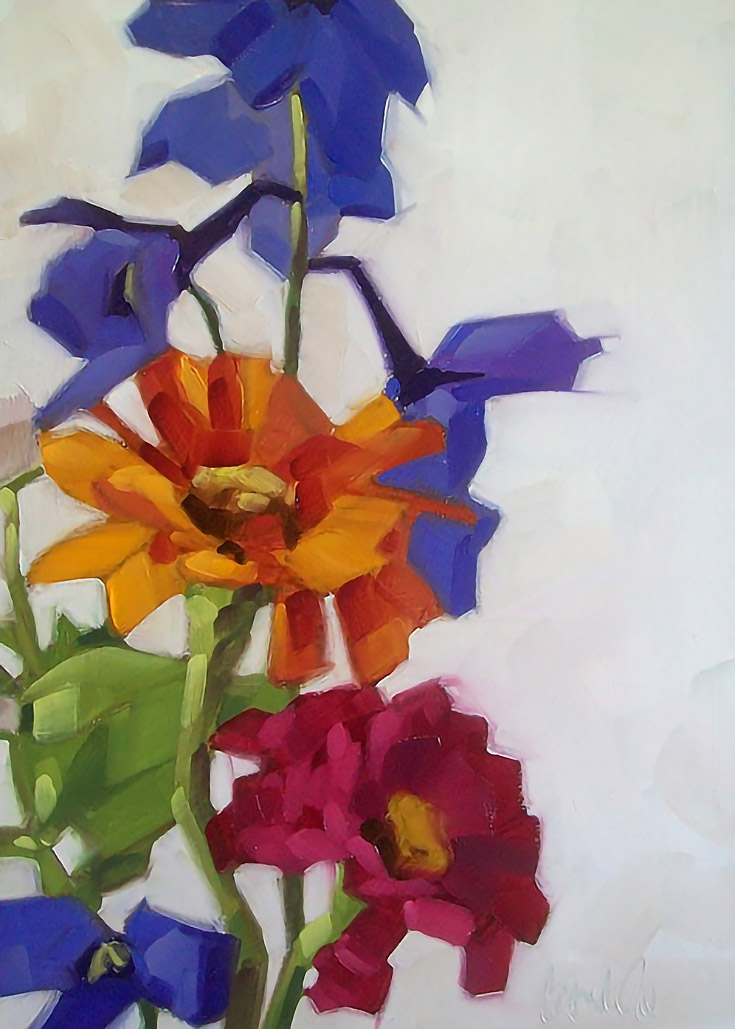Every painting is composed of negative and positive space. We tend to “see” the positive space—the apple in a still life painting, the person in the portrait—but there’s always more to a painting than that!
Negative space is visually just as important as positive space, and it’s the area around and in between your subject matter. Those little glimmers of light through the leaves of a tree, the shape of the empty sky above a cityscape, or the space inside the handle of your coffee mug are examples of negative space.
Never underestimate the beauty of negative space. . . all of those supporting shapes and colors are intriguing and important in their own right!
Incidentally, negative space can also called “white space” or “breathing room” and it is a very important element in the design of logos, websites, and other graphics. However, for the purposes of this article I will talk about it in regards to how I use it in my painting.
Negative space can add interest to your composition
A good composition will keep you looking. Your eye will continually move through and around the painting studying all the brushwork and placement of color. Negative space can play a big role in good composition, but sometimes you have to search for it. A little creative cropping can help with this.
For example, this floral still life is very pretty, but the only negative space is the big background around the flowers.
If you just crop in a bit, you can start to see interesting shapes form between the stems and around the flowers—you’ve turned one big negative space ino a variety of fascinating sections!
Take a few flowers out of the bouquet (for some internal negative space) crop in tighter and you may end up with even more beautiful shapes which can be the basis for a lovely composition.
Negative space can help you sketch your images
Every artist has had trouble sketching the right sizes or shapes at one time or another. You know the feeling. . . something just doesn’t look right!
On those occasions try sketching or blocking in the negative spaces to help you define your subject more accurately.
In the sketch above, I alternated between looking at the flowers themselves, and looking at the “holes” in between flowers and stems. Sometimes it was much easier to sketch the “holes” because they were simpler shapes.
It takes a bit of effort to look at negative space and draw it, but once you get the hang of it, it usually makes sketching easier, and even more fun!
Negative space can help with abstracting an image
I have always admired abstract painters. . . creating an abstracted representation of something is a difficult way to paint for me.
However, I do like to use abstract elements in my paintings from time to time, and using negative spaces really helps me along. In the painting below, you can see how I deliberately painted in negative shapes around the leaves on the lower left side.
I wanted those leaves to be secondary so I just blocked in a few abstract shapes using my light blue background color, and left them alone. This can be a good way to subtly suggest another element (in this case, leaves) without taking the focus away from your main subject matter.
The examples above are just a few ways that I utilize negative space in my paintings. If you’re interested in it, spend a little time practicing sketching the negative spaces around a composition, or painting the negative spaces in your next work.
I think you’ll find that just about ANY kind of practice with negative space will have a positive impact on your finished paintings!
This post may contain affiliate links.





